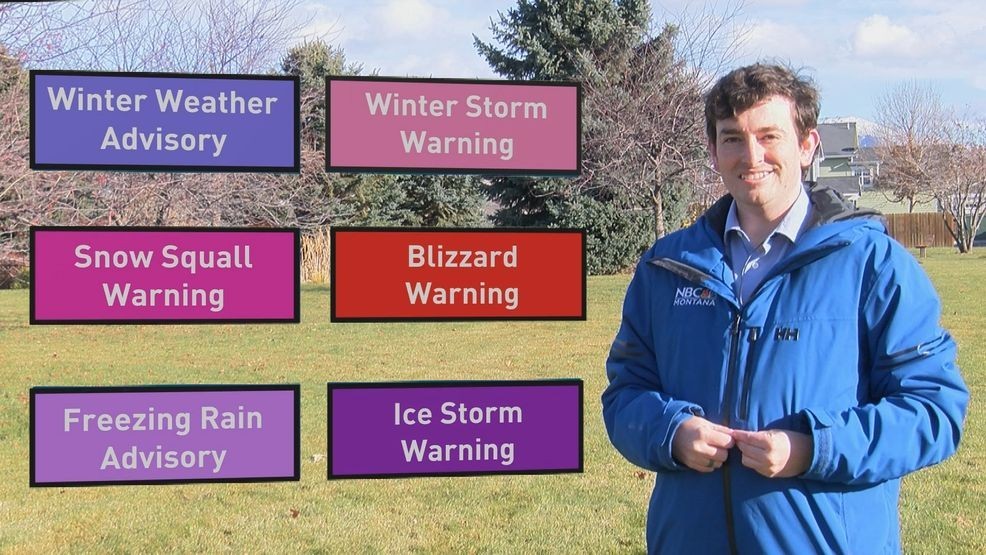Improved Heat Alerts From The National Weather Service: What You Need To Know

Table of Contents
Understanding the New Heat Alert System
The previous NWS heat alert system, while helpful, had limitations. Geographic targeting was sometimes broad, leading to alerts that didn't always reflect localized conditions, and the timing of warnings could be delayed. The updated heat warnings now leverage advanced technologies and data sources for a dramatic improvement.
The new system boasts several key enhancements:
- Improved accuracy of temperature and heat index forecasts: The NWS utilizes more sophisticated models, incorporating data from various sources, to provide more precise predictions of temperature and heat index – a measure that considers both temperature and humidity to determine how hot it feels.
- Enhanced communication and dissemination of alerts: Better heat alerts are now disseminated through a wider range of channels including the NWS website, mobile app, social media platforms, and partnerships with local news outlets. This ensures broader reach and quicker dissemination of information.
- More granular geographic targeting: Instead of broad regional alerts, the improved system provides more localized warnings, focusing on specific areas most vulnerable to extreme heat. This allows for targeted responses and resource allocation.
- Integration of additional data sources for more accurate predictions: The system integrates data from satellite imagery, weather radar, and surface observations for a more comprehensive and nuanced understanding of heat patterns. This allows for earlier and more accurate predictions of heat waves.
Types of Heat Alerts Issued by the NWS
The NWS issues several types of heat alerts, each signifying a different level of risk:
-
Heat Advisory: A Heat Advisory is issued when the combination of heat and humidity is expected to make it uncomfortable for some people. Be aware of the risks and take precautions to protect yourself. Recommended actions include staying hydrated and limiting strenuous outdoor activities during the peak heat hours.
-
Excessive Heat Warning: An Excessive Heat Warning signifies a significantly higher risk. Dangerous levels of heat and humidity are expected to pose a significant threat to human health. Immediate action is necessary. Stay indoors if possible, and check frequently on vulnerable individuals.
-
Heat Advisory vs. Excessive Heat Warning: The key difference lies in the severity and the urgency of action required. A Heat Advisory is a warning that conditions could become dangerous, while an Excessive Heat Warning indicates that dangerous conditions are already present or imminent.
How to Prepare for and Respond to Heat Alerts
Preparing for a heat wave is crucial. Create a heat safety plan including:
- Stocking up on supplies: Ensure you have plenty of water, non-perishable foods, and any necessary medications.
- Creating a cooling strategy: Plan how you'll stay cool – whether it’s air conditioning, fans, or taking cool showers.
During a heat alert, take these steps:
- Stay hydrated: Drink plenty of water throughout the day, even before you feel thirsty. Avoid alcohol and caffeine as these can dehydrate you.
- Limit strenuous outdoor activities: If possible, avoid strenuous activities during the hottest part of the day.
- Check on vulnerable neighbors: The elderly, people with chronic health conditions, and young children are particularly vulnerable to heat-related illnesses. Make sure to check in on them regularly.
- Recognize heat-related illnesses: Be aware of the signs and symptoms of heat exhaustion and heat stroke (heavy sweating, weakness, rapid pulse, confusion, etc.) and seek medical help immediately if needed.
Accessing NWS Heat Alerts and Forecasts
Accessing improved heat alerts and forecasts is easy:
- NWS Website: Visit weather.gov for detailed forecasts and alerts. You can search by location to receive specific information for your area.
- NWS Mobile App: Download the free NWS app for real-time alerts and forecasts on your smartphone.
- Sign Up for Alerts: Sign up for email or text message alerts to receive warnings directly to your device.
You can also find information through your local news channels and other reputable weather apps.
Stay Safe with Improved Heat Alerts from the National Weather Service
The National Weather Service's improved heat alerts represent a significant step forward in protecting communities from dangerous heat. By understanding the different alert levels, preparing appropriately, and staying informed, you can significantly reduce your risk of heat-related illnesses. Visit the NWS website at weather.gov to learn more about the better heat alerts and sign up for alerts in your area. Protecting yourself and your family from extreme heat is crucial – stay informed and stay safe!

Featured Posts
-
 Vspyshka Kori V Mongolii Ekstrennaya Pomosch Peregruzhena
May 30, 2025
Vspyshka Kori V Mongolii Ekstrennaya Pomosch Peregruzhena
May 30, 2025 -
 Ulasan Lengkap Kawasaki W175 Cafe Gaya Retro Dengan Teknologi Modern
May 30, 2025
Ulasan Lengkap Kawasaki W175 Cafe Gaya Retro Dengan Teknologi Modern
May 30, 2025 -
 Ticketmaster En La Mira El Plan De Trump Para Regular La Venta De Entradas
May 30, 2025
Ticketmaster En La Mira El Plan De Trump Para Regular La Venta De Entradas
May 30, 2025 -
 Treyler Filma Frankenshteyn Ot Gilermo Del Toro Premera V Subbotu
May 30, 2025
Treyler Filma Frankenshteyn Ot Gilermo Del Toro Premera V Subbotu
May 30, 2025 -
 Honda And Winning Riders A Winning Combination
May 30, 2025
Honda And Winning Riders A Winning Combination
May 30, 2025
Latest Posts
-
 Munichs Bmw Open 2025 Zverev Battles Griekspoor In Quarter Finals
May 31, 2025
Munichs Bmw Open 2025 Zverev Battles Griekspoor In Quarter Finals
May 31, 2025 -
 May Day Rally In Kingston Images Show Strength And Solidarity Daily Freeman
May 31, 2025
May Day Rally In Kingston Images Show Strength And Solidarity Daily Freeman
May 31, 2025 -
 Bmw Open 2025 Zverev Griekspoor Quarter Final Showdown In Munich
May 31, 2025
Bmw Open 2025 Zverev Griekspoor Quarter Final Showdown In Munich
May 31, 2025 -
 Indian Wells Surprise Zverevs First Match Exit And His Honest Assessment
May 31, 2025
Indian Wells Surprise Zverevs First Match Exit And His Honest Assessment
May 31, 2025 -
 Trump Administration Loses Key Advisor Elon Musks Resignation Explained
May 31, 2025
Trump Administration Loses Key Advisor Elon Musks Resignation Explained
May 31, 2025
